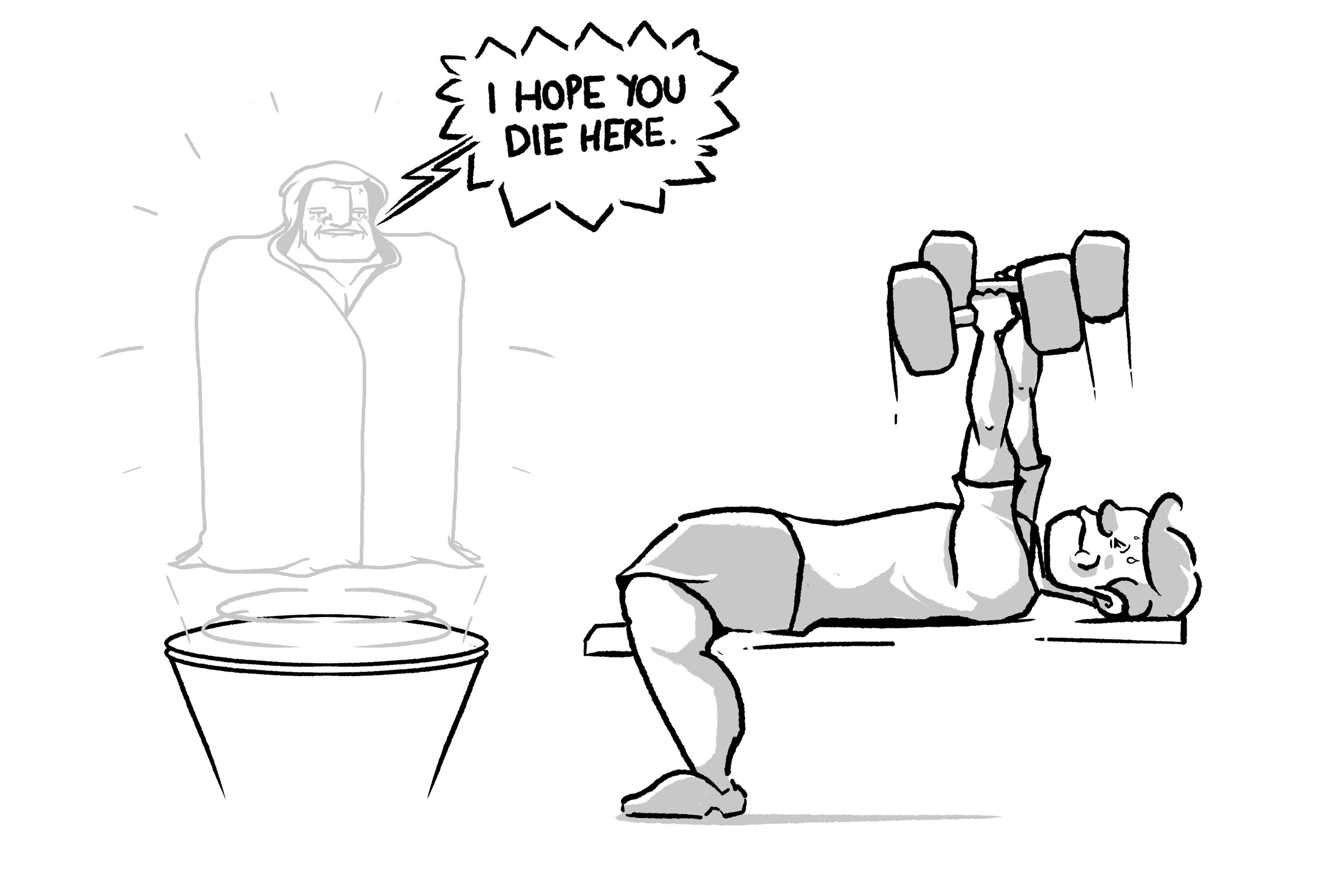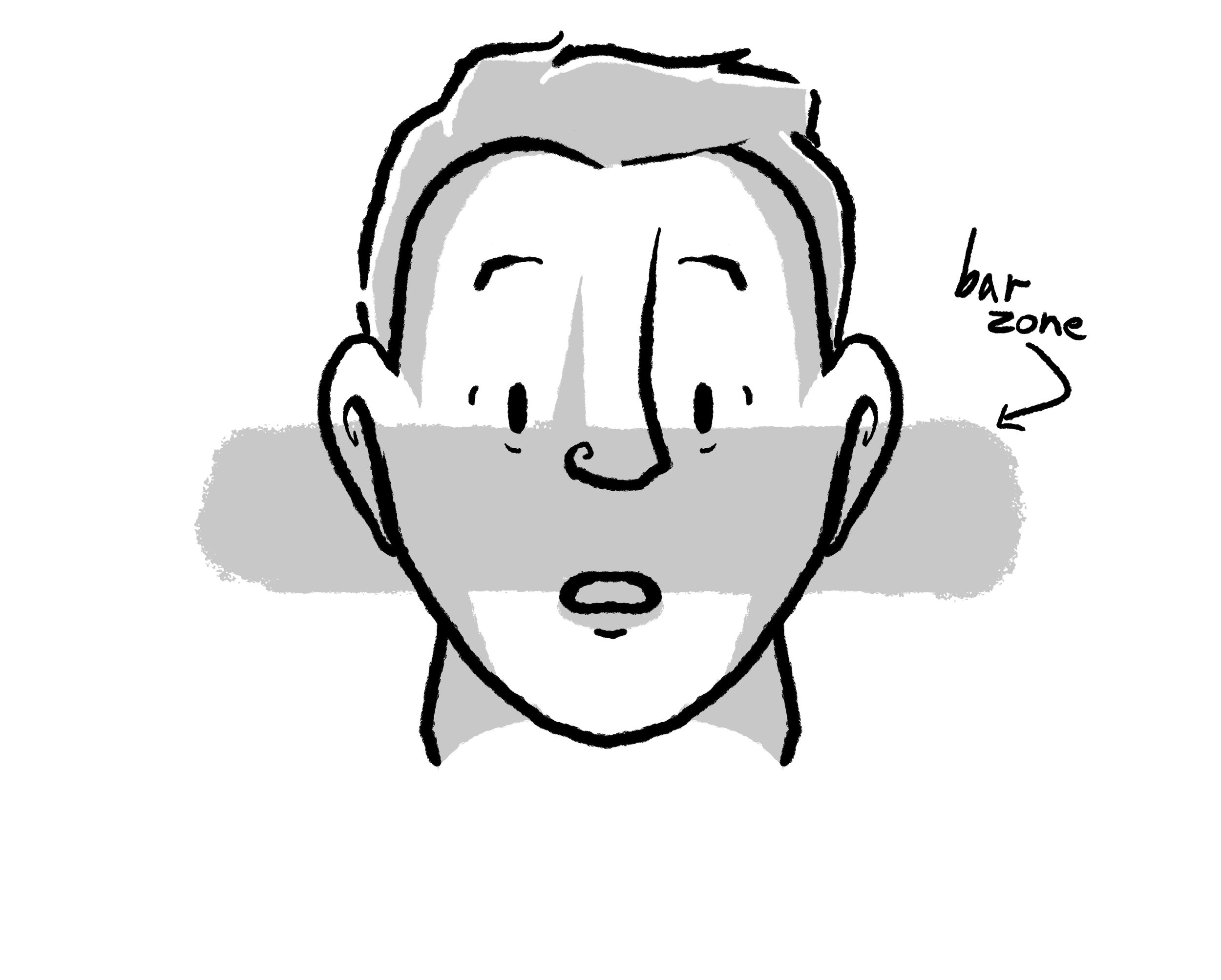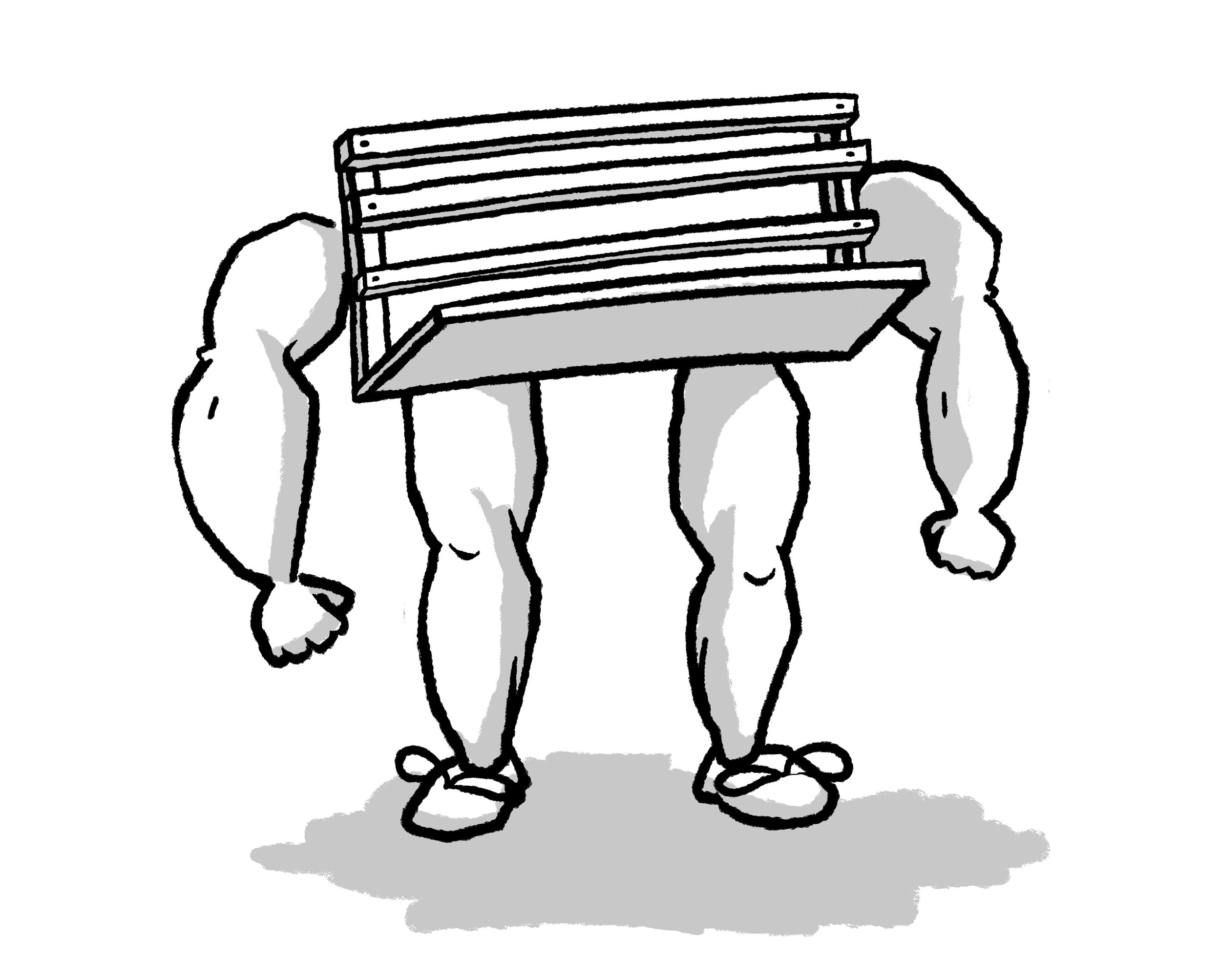Bench in Space
March 27, 3029
Our expedition across Saturn was successful. We’ve made discoveries that I predict will influence our lives for years to come. Today, we discovered an entirely new race of beings who have made several successful transmissions to Earth. However, these transmissions were simply an interruption of a man’s FM signal transmitting nothing but Sade songs.
April 7, 3029
Keith had his birthday today. We got him a cake and everything. No one told me he was allergic to plutonium.
June 17, 3029
Aliens attacked us and they stole all our provisions. We had to perform an emergency landing in the Zembino District of Mars, notorious for gang violence, cannibals, and the galaxy’s largest producer of junk mail. The crew that wasn’t killed upon impact were eaten by cannibals. I am pinned under a piece of metal. Send help.
Back at the command center, there’s not much anyone can do. The soonest they can get a rescue squad to Zembino will be in 5 lightyears and the Captain will be dead by then. You can’t get help from the Mars embassy since relations are already shaky, and if they find out your ship crashed there, it will be a PR nightmare. The only option, it seemed, was to provide the Captain with the tools and resources to save himself from the wreckage, and go to the demilitarized checkpoint to teleport back to safety.
But..how? especially if he’s pinned down by a thick rod of antimatter across his chest?
He must somehow press the rod off his body.
In researching extraction techniques, the team found something humans on earth used to do for recreation that eerily resembled Captain’s current situation. It’s called bench pressing.
Bench pressing is a technique used thousands of years ago to strengthen the upper body. Back then, people used to go to common areas to lift pieces of iron as recreation. This rare piece of human trivia may save Cap’s life. The team rushes to deconstruct and understand the movement. Teaching the Captain to master the ancient practice of bench press may be his only key to survival.
THE MUSCLES YOU’LL USE
If the muscles in the bench press were a band, the pec would be the lead singer, the triceps and delts would be guitars, and the rhythm section would be the anterior delts and the rotator cuff. The lats are the roadie—underappreciated yet valuable.
Pectorals: the main mover during the bench. Provides horizontal flexion (like hugging)
Triceps: responsible for extending your elbows (as in a push up)
Anterior deltoids: Provides shoulder flexion (like when you high five)
Rotator cuff: for shoulder stability
Lats: more on the lats later. They help with stability.
I’ll talk more about the flexion demands of the bench press later.
THE LAWS OF FORCE REVISITED
The most efficient way to move weight against gravity is in a straight line. You already know that. But when it comes to the bench press (or any chest pressing exercise), we have to allow for some inefficiencies—it’s the human way. The Gorlog race is the only race that can bench in a straight bar path—that’s why they’re the universe bench champs.
If the barbell travels in a straight line--directly above the shoulder--the shoulder joint will impinge, meaning the boney parts of your shoulder will grind into your rotator cuff. Over time, benching like this will turn your rotators into shredded cheese. Actually, that sounds delicious.
Unlike the Gorlogs, we have to accommodate our stupid bodies and our stupid shoulders. If you want to have a strong bench press, you have to bench press a lot. Years of it. And if you want to bench press for years, you have to keep your shoulders healthy. You achieve this by pressing in a curved line. Oh, how the physics gods must mock our inefficiency.
MOMENTS AND MOMENT ARMS
A moment arm is the distance between a joint axis and the line of force. In the bench press, the moment arm is the distance between your shoulder and the barbell. Minimizing the moment arm will make the lift easier on us. We do this by pressing in a curve.
To determine the bar path, let's examine two shoulder factors that work together in the bench press:
Shoulder flexion (what you do when you hail Emperor Zygong)
shoulder horizontal flexion (what Sharon did when she found out you gave her Space Herpes).
A shorter moment arm means lower flexion demands. Decreasing flexion on one variable will increase it in the other. For example, if you want to decrease horizontal flexion by moving your grip closer, you’ll notice the bar will land further from your shoulder, increasing shoulder flexion.
The solution is to find an ideal medium. In most cases, this will be a grip of double the distance of your shoulders and lowering the bar somewhere between the nipples and where the ribs meet.
BENCH PRESS PROGRESSIONS
Researchers in the command center uncovered some ancient documents about bench pressing and upload it to the Captain’s wrist computer. The documents detail ancient movements that Earth people used to do. It’s unclear the reasons why. The only closest evidence is that the male population would engage in this behavior as a mating ritual.
There is one surviving person who understands the technicalities of weight training. It is a 120-year-old man named Gene. His hologram is transmitted to the crash site to help the captain escape.
Step 1
Single arm dumbbell or kettlebell press.
Start these with an incline bench then progress to a flat bench.
Kettlebells will challenge shoulder stability more, which is generally a good thing for learning this move.
Focusing on one arm at a time will make coordinating the move easier, and will force you to focus on smaller details of the movement.
Start with 3-4 sets of 10-15. Progress by increasing the weight and lowering the reps.
Step 2
Alternate presses
Alternate presses are when you alternate pressing arms. Lift both dumbbells up and alternate pressing the left and right sides.
Start with 3-4 sets of 10-15. Progress by increasing the weight and lowering the reps.
Step 3
Dumbbell bench press
Like the alternate press, but you're not alternating anymore. Press both dumbbells at the same time.
Start with 3-4 sets of 10-15. Progress by increasing the weight and lowering the reps.
Accessories
Push-ups: do this as an accessory to dumbbell pressing.
If you can’t do a full push-up yet, doing them on a smith machine or power rack is a great way to adjust the difficulty. The higher the bar is set, the easier it’ll be.
Machine chest press: you can do this in addition to or instead of a dumbbell press. But I highly recommend doing some pressing with free weights to teach yourself some stability and control.
How to bench press
It’s time. After some practice, you’re ready to bench! Or, in this case, you’re ready to push a beam off your body to save your life!
*Depending on your athletic history, lifestyle, age, and a million other variables, I may not recommend that you learn how to bench straight away with a barbell bench press. If in doubt, start with the progressions. *
Variables
Head Position
Your head should rest on the bench through the lift. That sounds like a dumb thing to mention, but it’s fairly common to see people flopping their heads around on a bench. It’s a waste of energy that could be spent on your bench. Position your noggin with the bar racked somewhere between your eyeballs and mouth.
Shoulder Blades
When you bench, your shoulder blades are pinned beneath the ribs, the chest is up, and your back is arched. In a correct bench press, the shoulder blades do not move.
There are a couple of options to achieve this:
Pull them back.
Pull them back and down.
·Pull them back and shrug.
Here’s why this is important:
Reduce the range of motion (ROM) of the bar. Less ROM means less work, and less work means you can lift heavier.
Create a flat surface on the upper back for better force transfer.
Less movement on the upper back for better force transfer.
The goal is to drive the bench and the bar apart. Imagine you’ve become an extension of the bench.
How to avoid shoulder pain on the bench press
Shoulder pain can come from a lot of different things. Shoulders are complicated. So much so, that the person in charge of naming body parts settled on calling the shoulder "situation"—composed of the clavicle, humerus, and scapula—the shoulder complex. I’m not going to go into extreme detail about how each of these elements work in the bench press, but I’m going to tell you what you can do to bench press safely and maintain shoulder health.
Retract your shoulder blades: this may take some trial and error as to how you retract them. I feel great with pulling them back and down but feel like a butthole with them pulled back and up. Some people are the opposite. Experiment and find what feels best.
Tuck your elbows: for the humerus to track safely through the shoulder socket--without taking chunks of your rotator cuff with it--your elbows should adduct, or tuck in, as you lower the bar. When pressing up, you can flare your elbows, which will help initiate a curved bar path. When you immobilize your shoulder blades by pinching them together you create the benefit of a stable base for lifting but eliminate their ability to prevent the humerus from grinding into your rotator cuff. The humerus is going to have to take some extra duties and handle its own problems. We do this by tucking your elbows when lowing the bar, so they’re at about 75 degrees.
Do some pulling: do the roughly same amount of pulling exercises as you do pressing exercises. Choice exercises are rows (either bent over rows or chest supported) and pull-ups or lat pulldowns.
Internally rotate: do some moves that support and strengthen the rotator cuffs. I like doing face pulls for these. You can do them on the cable machine, or lying down.
Arching
When you pull your shoulder blades back, you’ll notice it brings your chest up. This is the first step in developing our arch. With an arched back/lifted chest, the muscular force at the humerus is better aligned with the moment arm.
While the most efficient bar path would be straight up and down, this would wreck the shoulders. However, we can cheat the system by arching. With an arch, we minimize the moment arm on the shoulder, and reduce the distance from the bottom to lockout--making it not only an easier lift but less stressful and safer on the shoulder.
Here are a few methods for developing an arch.
Feet up
With your feet up on the bench, lift your hips (like you're doing a glute bridge)
Arch your lower back, like you're trying to get your shoulders and butt to touch. Dig your shoulders into the bench, and once you have a secure position, place your feet back on the floor without disrupting your arch. Dig in deeper by using the uprights to push yourself down while using your feet to press up.
Hands up
Set your grip on the bar and establish your upper body position. Once your position is set, then create your arch by flexing your lats and walking your feet up towards the bar. Again, trying to get your shoulders and butt to touch.
Lats
Lats are pulling muscles. So, why do we need them on the bench? In essence, they serve the opposite function: they pull the humerus back, while the pecs push them forward. A case has been made that if you have huge lats, you can use them to bounce off the bottom of the rep. But more practical use of the lats in the bench is that they assist in developing and maintaining an arch. Fully contracted lats will pull the shoulders and lower back close together, further reinforcing a stable base to press from.
Butt
The butt stays on the bench. Keep it flexed to maintain full body tension.
Leg drive & foot position
Finding the right foot position is a key factor in getting tight and generating leg drive.
Foot placement:
Once you find a secure foot position, driving your legs against the floor will transfer force horizontally along the bench (remember the third law?)--through the hips into the back--to reinforce the arch and chest position.
Grip & Unrack
Once you’ve decided on the grip, squeeze the bar like you’re in the finals of a bar gripping championship. Unrack the bar without losing your position on the bench. Once your position is set on the bench, do not break form. The bar, wrist, and elbow should be in alignment.
Lowering the bar
Lower the bar slowly, and aim to land in the same spot each time. A good way to keep tension in your back is to imagine ripping the bar apart. If you're planning on competing in powerlifting, remember to pause for a second at the bottom of the rep.
Lifting the bar
Use your leg drive and press the bar as fast as you can. When lowering the bar, your elbows should tuck in towards your body. When you press out, flare your elbows and press towards your face/starting position.
Putting it all together
Lay on the bench with the bar somewhere between your eyes and lips.
Establish your arch using the feet-up or hands-up method.
Establish tightness in your lats and secure your feet.
Unrack the bar and maintain your position.
Slowly lower the bar while imagining ripping the bar apart.
When the bar touches your chest, drive your feet into the ground towards your head, flare your elbows and press the bar up as fast as possible.
Common questions and their answers
Is bench good for building the chest?
The pecs respond well to heavy loading, and in most cases, the bench press is a safe and efficient way to do so.
Should I wear wrist wraps or elbow sleeves?
If you feel wrist pain, yes. If you feel elbow pain, sleeves aren't the solution. Sleeves may add a couple of pounds to your bench, and they're illegal in competition. Keep that in mind if you train in sleeves and want to compete--your sleeved bench is likely higher than your raw bench.
How important is bench press for the average lifter?
I think you can live without benching if you want to. But what kind of life would that be? At the very least, an upper-body pressing movement should be part of a well-rounded exercise routine.
How often should I bench?
Start with once a week. Track progress and add more only when necessary.
Is xyz a good bench press?
Don't worry about how much you bench unless you want to be competitive. If you're making weekly/monthly/yearly progress on your bench and you feel good doing it, then it's a good bench press.




















